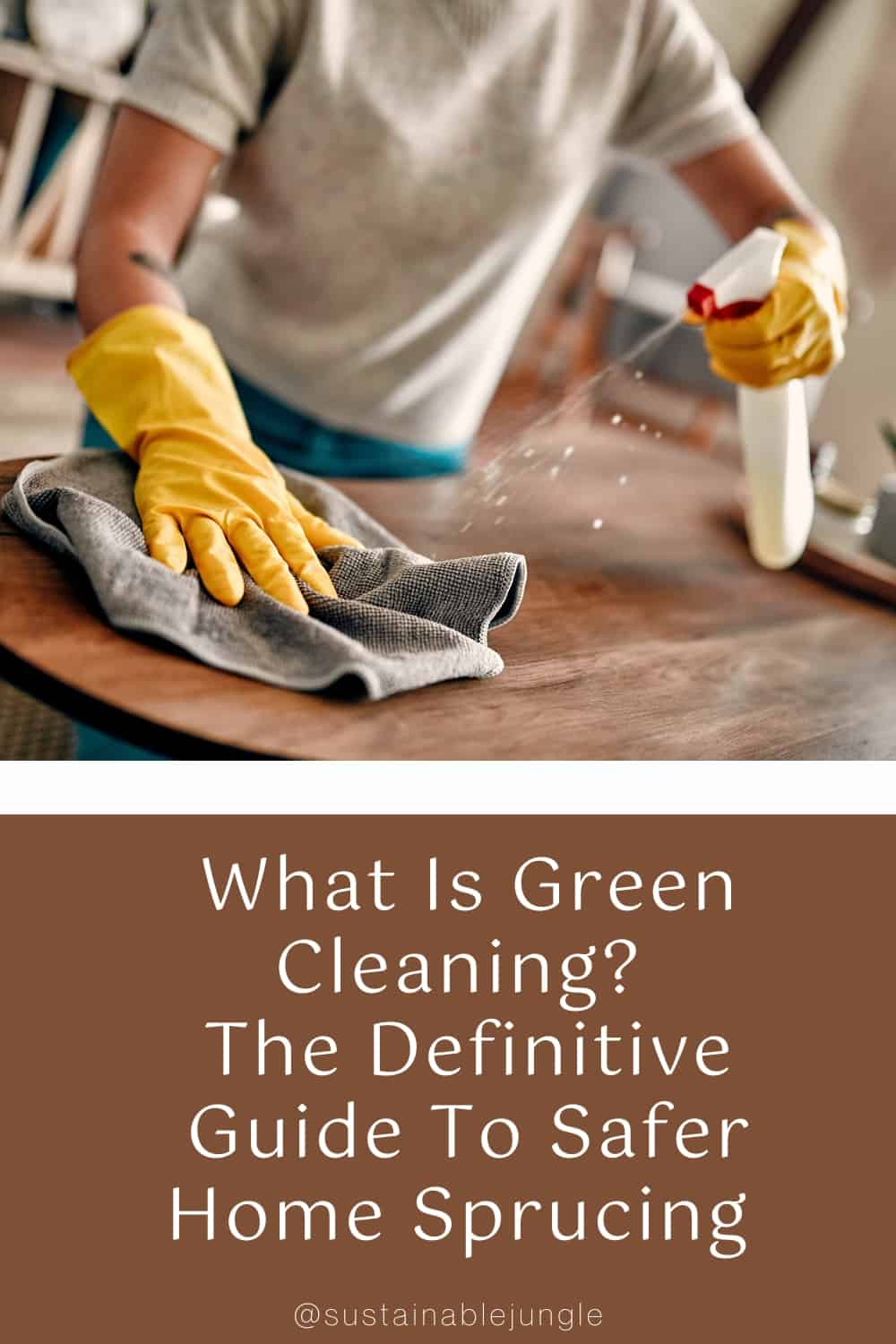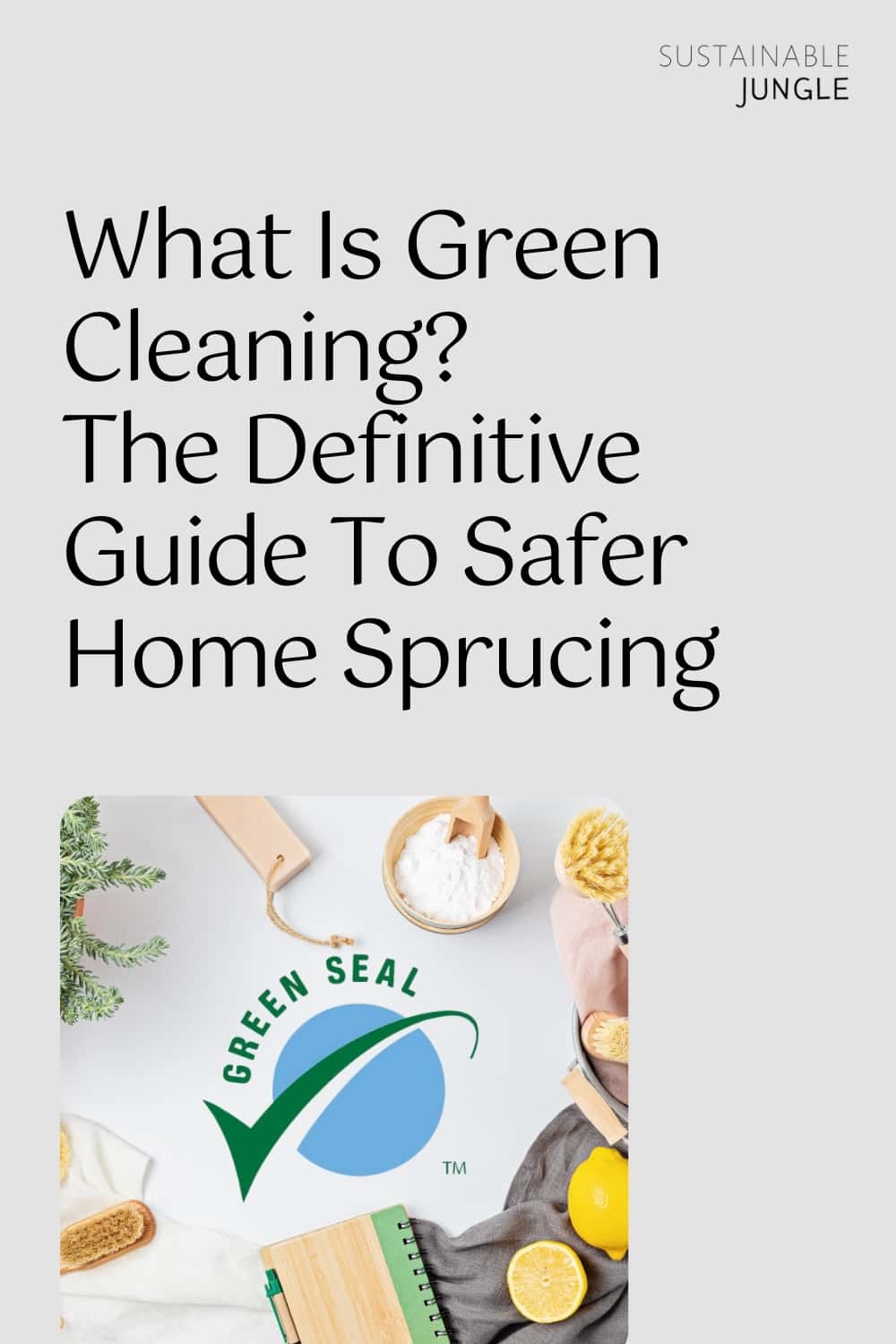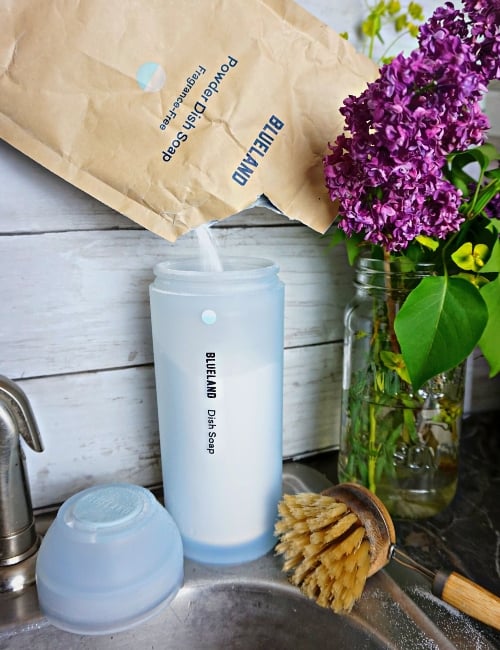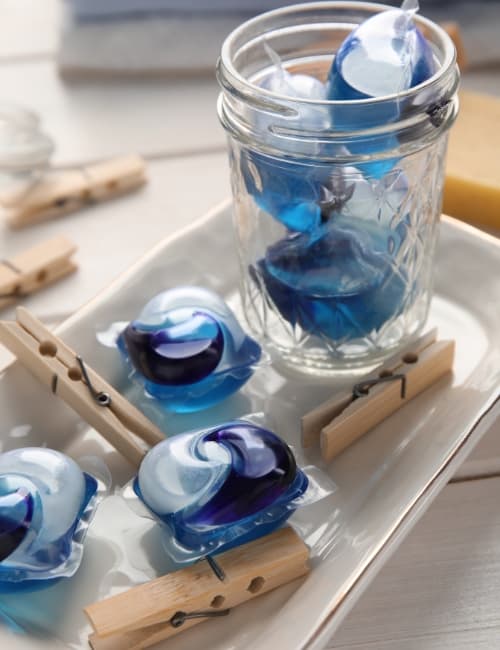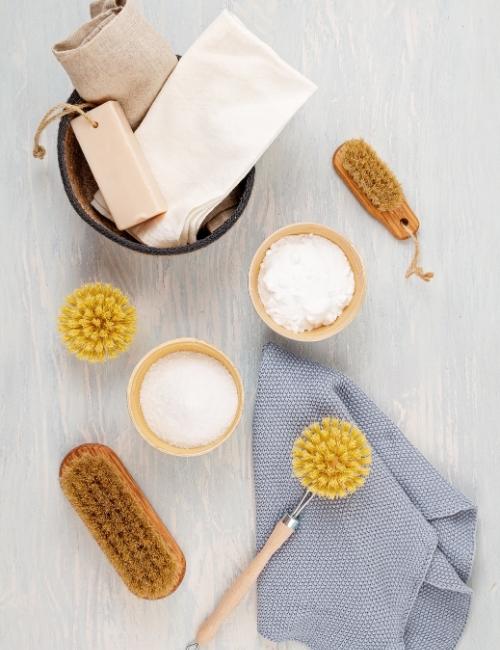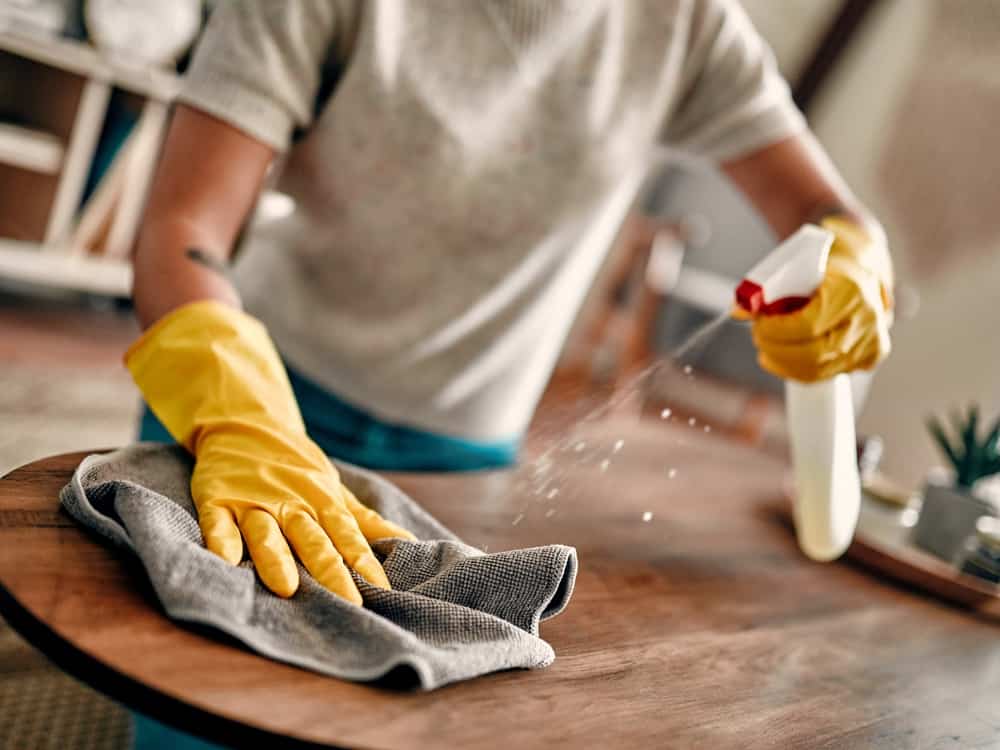
What Is Green Cleaning? The Definitive Guide To Safer Home Sprucing
Who knew the household cleaning aisle was such a mess?
As if motivation to house-clean wasn’t tough enough, learning that most conventional cleaners dirty our environment with toxins more than they eliminate messes makes us want to throw in the proverbial (dirty) towel.
Research indicates that hazardous chemicals lurk in more products than we realize: 53% of cleaners contain ingredients known to harm the lungs, and 22% contain asthma-causing chemicals.
Those with volatile organic compounds (VOCs) negatively impact indoor air quality and even contribute to smog formation outside.
And the dirty joke (not that kind of dirty) about household cleaners is that ingredients don’t require full disclosure. The Environmental Working Group (EWG) found that 93% of brands conceal certain ingredients.
So it’s also a dirty trick to make us believe household cleaning products help us, when really they decimate just about everything they come near—including our health and the planet’s.
Instead, eco green cleaning products will keep your home sparkling clean and smelling fresh without the negative (even fatal) consequences.
But what are green cleaning products? And what is ‘green cleaning’ from a broader, conceptual standpoint?
We’ve cleared away the grit to reveal the best practices for green home cleaning.
Roll up your sleeves, and let’s dust our way to the bottom of how to clean green and what that means.
1. What Is Meant By ‘Green Cleaning’?
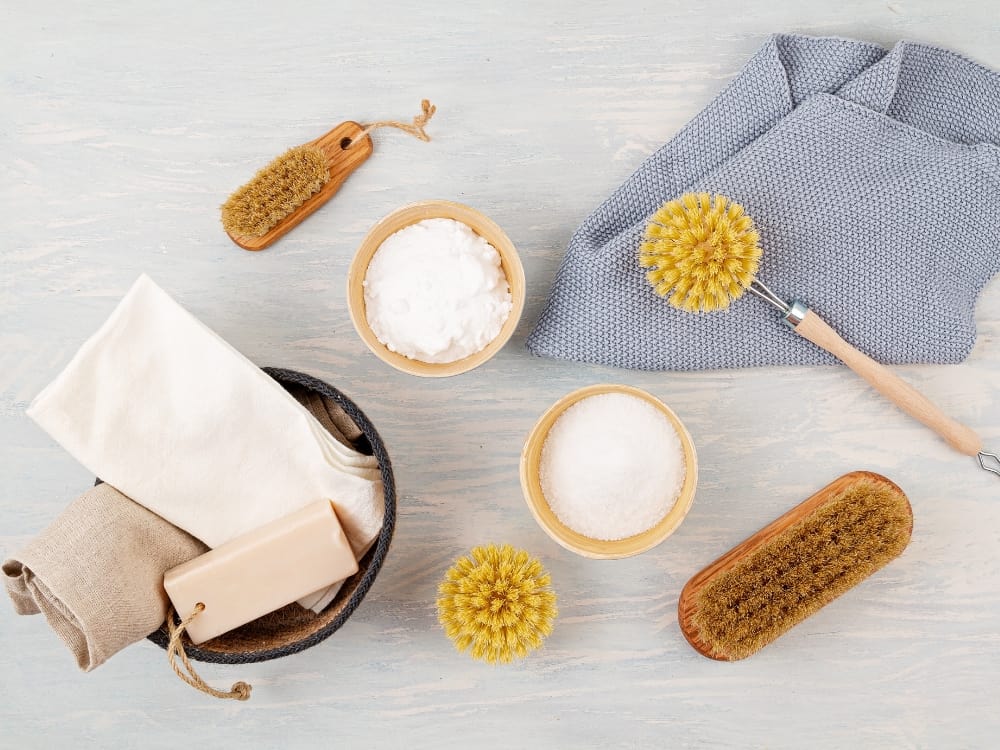
Like many modern buzzwords in the sustainable living sphere (biodegradable, for instance), the vague term can mean a number of things.
It’s namely a process of evaluating, purchasing, and using products for cleaning that ensure our environment and health remain free of harmful toxins.
Why dirty your home, body, and planet with things like forever chemicals over a casual Sunday cleaning session?
Chemical exposure can lead to irrevocable damage to our bodies, waterways, air, environments, and homes.
Meanwhile, there are 17,000 petrochemicals available for home use, and only 30%(!) were actually tested for exposure to human health and the environment.
Beyond the chemical-free component, sustainable manufacturing processes and packaging reduction are other aspects to non-toxic and green cleaners.
And naturally, green cleaning will mean something slightly different to every person.
For example, some people believe it’s only simple, natural solutions like vinegar and essential oils, while others seek manufactured green products that are healthier for the home.
The following are typically characteristic of clean green cleaners:
- No artificial fragrances
- No artificial colors
- No chlorine
- No phosphates
- No petroleum-based compounds
- No or low VOCs
- Biodegradable or recyclable packaging
- Harmless to humans and ecosystems
- Ideally organically grown ingredients using sustainable farming practices
- Have a pH level between 2.5 and 12
But is green cleaning more expensive?
Usually not at all. Most non-toxic cleaning products are made concentrated to mix with water, so they last much longer.
If you’re choosing the DIY route, products like hydrogen peroxide, baking soda, and white vinegar are especially affordable.
2. Why Is Green Cleaning Important?
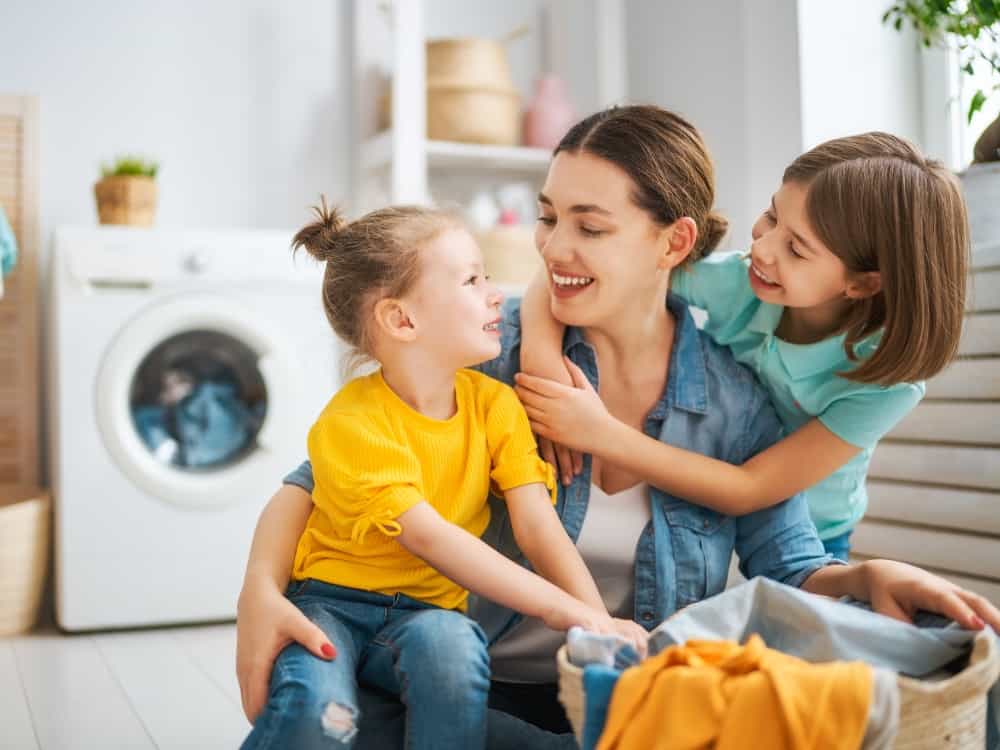
Conventional cleaning products can have a number of negative effects and contribute to cancer, asthma, and birth defects.
In addition to making the home a safer place for you, your pets, and your family, there are numerous environmental reasons why cleaning green is important.
From reducing ozone and ecosystem depletion and air and water pollution, there’s no shortage of reasons to make the switch to green cleaning supplies, for example:
- Safer for kids and pets: From chemical poisonings to a surge in asthma risks and cleaning chemicals discovered in newborn umbilical cords, the dirty truth is most cleaners are harmful. Pets and children are more vulnerable due to their small size and developing immune systems.
- Better indoor air quality: The average American home has 25 gallons of harmful toxins pass through annually. This is the main cause of indoor air pollution, which the EPA estimates to be 2–100x higher than outdoor air pollution levels.
- Lessened chemical exposure: 61% of occupational health worker issues are skin problems. Switching to environmentally friendly cleaning means gentler ingredients that are less prone to triggering skin reactions.
- Water conservation: Green cleaners minimize water pollution and protect local water sources, which is essential given that 44% of all wastewater returns to the environment untreated.
- Sustainability: Eco green cleaners are made with renewable and natural ingredients. A sustainable manufacturing process and sustainable packaging also improve our health and environment in the long run.
- Reduced allergen and irritants: The American Lung Association says harmful chemicals and VOCs contribute to chronic respiratory problems, allergic reactions and headaches.
Common Toxic Ingredients to Avoid
It can feel like you need a doctorate in chemistry to read labels, which is why the EWG makes this handy guide for how to read ingredients.
Here is a small sampling of the literal thousands of harmful toxins present in popular products:
- Ammonia: Often in polishers and glass cleaners, but burns the nose, throat, eye, and respiratory tract. High concentrations result in lung damage, blindness, or death—not to mention global pollution.
- Artificial Fragrances: A legal loophole means ingredients of fragrances aren’t required, which can feature 200-plus undisclosed known endocrine disrupting chemicals. Scents don’t improve product performance and only give a fake impression of cleanliness.
- Artificial Dyes: Says EWG, “Twelve percent of products use the terms “dyes,” “colorants”, or “colors” instead of listing the specific chemical dyes… FD&C Yellow 5 and FD&C Red 40… may cause allergic reactions or be contaminated with impurities known to cause cancer.”
- Chlorine: Found in toilet cleaners, mildew removers, and laundry whiteners, high concentrations of chlorine cause nausea and an allergy-like reaction. Inhaled, it can cause asthma and it burns the skin and eyes. It’s especially harmful for people with respiratory or heart conditions, and fatal when combined with ingredients like ammonia.
- Ethanolamine compounds: Found in floor and tile cleaners, laundry detergents, and hand soaps, these surfactants (often under the name of DEA and TEA) help remove dirt, stains, and grease. Toxic enough to be banned in the EU, they’re linked to hormone disruption, cancer, liver tumors, and organ toxicity from accumulation in the liver and kidneys.
- Isothiazolinone preservatives: Synthetic antimicrobial widely used in household cleaners. Studies indicate they cause allergic reactions, contact dermatitis, and chemical burns.
- Methylisothiazolinone: A common preservative and antimicrobial already banned in the EU, since it can cause respiratory irritation, skin sensitivities, skin burns and eye damage.
- Perchloroethylene: Contained in carpet cleaners, spot removers, and dry-cleaning solutions. The EPA classifies it a neurotoxin and possible carcinogen, they propose a nationwide ban.
- Fluorocarbons (PFOA/PFAS): Stain removers, dishwasher detergent, and laundry detergent will contain these “forever chemicals” to “improve” their effectiveness. They’re linked to hormone disruption, cancer (kidney and testicular), liver and thyroid problems, reproductive harm, increased cholesterol, and abnormal fetal growth.
- Phosphates: Found in countless household cleaners like detergent, dish soap, and more. Residues on dishes can cause nausea, diarrhea, skin irritations, and respiratory issues. In the environment, they cause eutrophication and harmful algae blooms that eventually choke out natural life.
- Phthalates: A key ingredient in just about anything scented and often not labeled, these endocrine disruptors that negatively impact human reproductive health. They also cause cancer in rats.
- Quaternary Ammonium Compounds: A potent disinfectant found in non eco-friendly fabric softeners and most “antibacterial” cleaners. Studies show “quarts” lead to resistant superbugs, and they contribute to asthma and likely lower sperm count and fertility in women. Unless you’re performing brain surgery on your dining room table, there’s no need to sterilize your house with quarts.
- Sodium Hydroxide: Found in drain and oven cleaners, this is a highly corrosive chemical (as in: they use it to turn tree pulp into viscose fabric). Ingesting it will lead to internal burns, nausea, and vomiting. Inhalation of high concentrations can lead to fluid in the lungs (pulmonary edema), a medical emergency.
- Triclosan: An antibacterial compound found in commercial liquid soaps that causes allergies, skin irritation, and hormonal problems. It’s likely a human carcinogen and toxic to algae. Even the FDA recently banned it from antibacterial soaps.
- VOCs: These include phosphorus, nitrogen, and ammonia compounds that are emitted as gasses from products and destroy indoor air quality. Inhalation can cause eye, nose, and throat irritation, nausea, headaches and loss of coordination, and damage to the liver, kidneys, or central nervous system. Some VOCs are carcinogenic. They’re also known to kill marine life.
- 2-Butoxyethanol: A solvent used in all-purpose cleaners, glass cleaners, lacquers, soaps, enamels, varnishes, and paint thinners. It’s associated with asthma, allergies, pulmonary edema and severe liver, kidney, and red blood cell damage. Chronic exposure can cause neurological and blood effects, like nausea, tremors, and anemia. The National Emission Standards for Hazardous Air Pollutants regulates 2-butoxyethanol because it potentially causes reduced fertility, low birth weight, and toxic liver metabolites.
Why Don’t I See These Listed on Cleaning Products?
It’s a lot of scary-sounding research to absorb, but it beats absorbing those toxins, right?
Unfortunately, it’s not always easy to discern what products are toxic or not for two main reasons:
1. Ingredients disclosure:
To effectively evaluate a product, the consumer has to know all the ingredients and their potential interactions.
Not only does federal law NOT require manufacturers to fully disclose ingredients, but the average person isn’t aware of the potential interactions of different obscure ingredients.
2. Greenwashing:
Vague and unregulated terms like “eco-friendly,” “non-toxic,” and “natural” emblazon products, but they usually mean little.
This is why the FTC now issues guidance against brands making overly-general environmental or health benefit claims.
3. Greenwashing of Green Cleaning Products
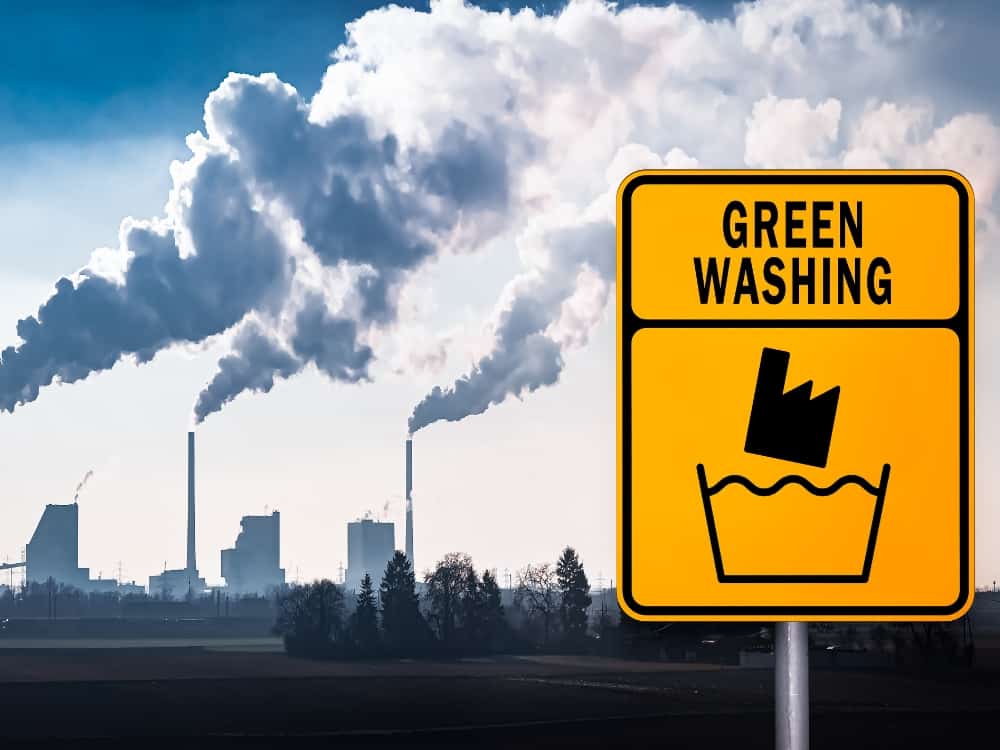
Greenwashing is the practice of using misleading claims and vague terms about the positive environmental and/or health benefits of a product.
It preys on the willingness of consumers to “do the right thing” and “dollar vote” for brands they’re tricked into thinking share their values.
In the whopping $247 billion dollar cleaning product industry, greenwashing is not only dishonest, but it hurts consumer health thanks (no thanks) to lame product labeling laws.
In the UK, greenwashing has become such an issue that the Competition and Markets Authority (CMA) initiated a formal investigation into the green claims of household essentials.
Since there are so many “green” and “natural” cleaning products that aren’t really natural or green, here are some of the biggest offenders when it comes to greenwashing:
- Dawn antibacterial soap: The bottle promises “Dawn helps save wildlife;” meanwhile, its ingredient triclosan is known to significantly harm aquatic life.
- Biodegradable J Cloth: Lacks a proper compostable seal, which means it can’t go in the green bin and will get sent to the landfill, where it becomes anaerobic.
- Simple Green All-Purpose Cleaner: Says “green” and “non-toxic,” but features 2-Butoxyethanol, which is associated with everything from asthma to red blood cell damage to neurological disorders and reduced fertility.
- Sunlight Green Clean laundry soap: While the label promises “plant-based cleaning ingredients,” a CBC-commissioned test showed 38% of the product derived from petro-chemicals.
- Vim PowerPro Naturals: Virtually zero of the ingredients are made available for this bathroom cleaner, which means the use of the word “natural” is likely bunk.
- Arm & Hammer Clean & Simple laundry detergent: Labeled phosphate-free, but all laundry detergents have been phosphate-free for thirty years due to algae blooms.
All this is to say: criteria are needed to evaluate if a green product is legit before you purchase it.
4. Green Cleaning Product Certifications
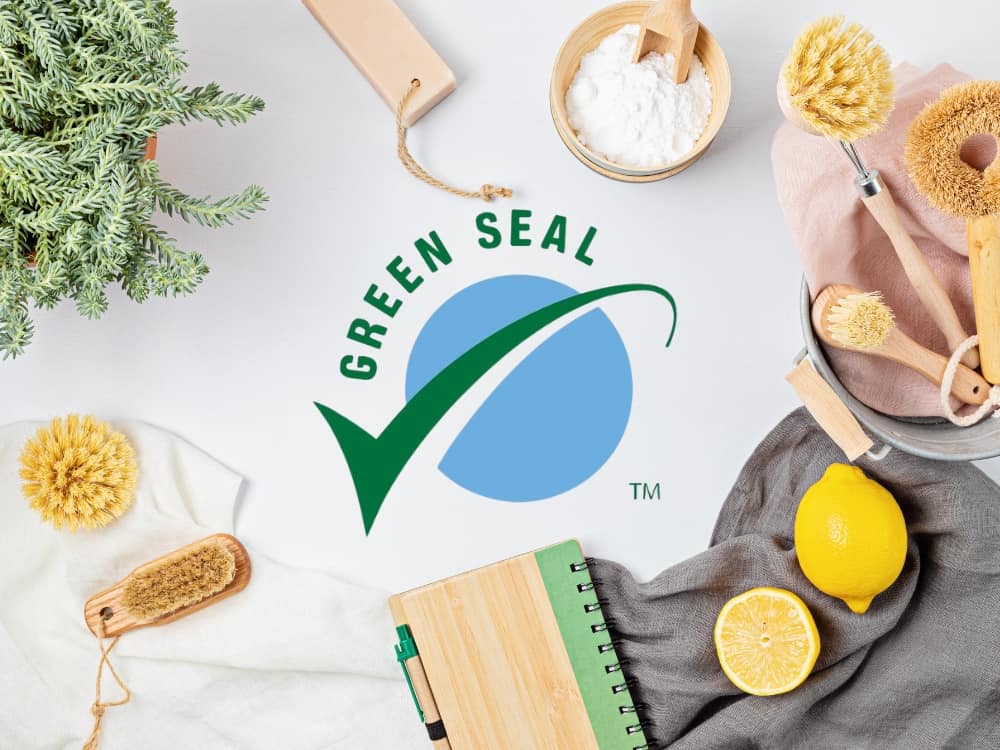
Sustainability certifications and third-party verification can help bolster our trust in healthy products, since the terms “green” and “natural” are unregulated.
The best-regarded green certs:
- Green Seal: The original green house cleaning certification, around for over thirty years.
- Ecologo: Ecolog’s founders UL have developed and implemented safety standards for building, cleaning, paper, plastic, electronics, electricity, and more.
- Safer Choice and Design for the Environment (DfE): The EPA’s certifications verify a product uses the safest possible ingredients. DfE is specifically for antimicrobials, like sanitizers and disinfectants.
- Environmental Working Group (EWG) Verified – Any product certified by EWG Verified must be free of their ingredients of concern, disclose all ingredients to consumers, and meet their air quality standards.
- USDA Biopreferred: According to the USDA, “In biobased cleaning products, fossil fuel-based ingredients are generally replaced with ingredients such as biobased surfactants and enzymes.” They offer a catalog of certified items.
- USDA Organic: Indicates that some portion of ingredients are grown without synthetic pesticides or fertilizers, though not all. Sigh. Find products via the USDA organic integrity database.
- MADE SAFE: The MADE SAFE certification is one of the most stringent non-toxic certifications, indicating a product is free of any toxic ingredients known or suspected to harm human health, animals, or ecosystems.
In addition to these labels, there are a few groups that help establish a framework for eco green cleaning.
- Global Ecolabel Network: A global nonprofit organization that ensures certification standards are published and transparent, that they address environmental criteria, and that they also evaluate a product’s life cycle.
- EWG: Offers a Guide to Healthy Cleaning and rates more than 2,000 home products.
- Clean Water Action: Provide this helpful guide.
But certifications aren’t the only thing to consider when answering the question, “What constitutes an environmentally friendly cleaning product?”
5. Criteria For Green Cleaning
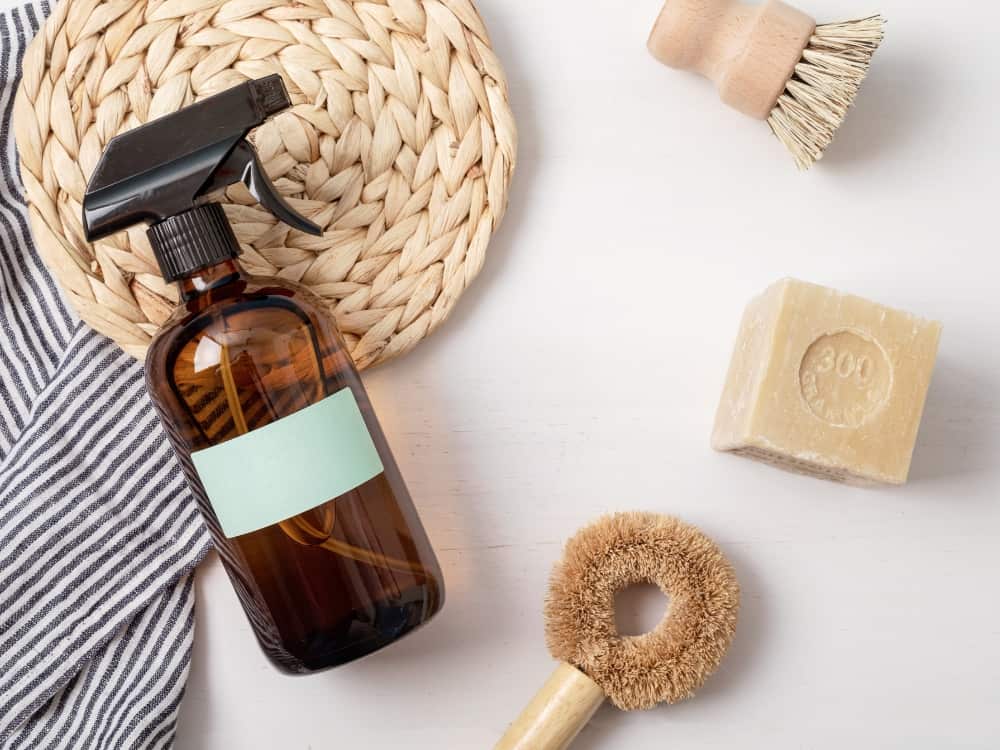
At this point, you’re probably pondering, “What is an example of a green cleaning?”
As with our criteria for ethical and sustainable beauty, we’ve developed our own standards for determining what is green cleaner to sift out the greenwashed offenders.
- Non-toxic: Truly natural and organic ingredients form the basis of eco-friendly cleaning products. Whether the products are eco-friendly laundry detergent brands or non-toxic dish soaps, we look for ingredients like organic coconut oil, baking soda, lemon juice, tea tree oil, and organic Castile soap.
- Vegan & cruelty-free: A popular ingredient in household cleaning products is glycerin, which can be sourced from animal fat or plant oil. We want brands that use zero animal byproducts. To protect our furry friends, zero testing on animals is also key.
- Palm oil free: Common in detergents and soap. While it’s often tricky to avoid, we prefer to because of its ties to deforestation, environmental destruction, and unfair workers rights. If it’s present, RSPO certification is a must.
- Ethical ingredient sourcing: We like to learn about a brand’s ethical sourcing, because human rights and equitable, traceable supply chains are a crucial component of sustainability.
- Thoughtful packaging: We prefer refillable cleaning products, zero waste products, compostable packaging, or items packaged in certified recycled content. Because the last thing our cleaning routine should do is dirty our planet further.
6. Green Cleaning Guide: Tips & Strategies
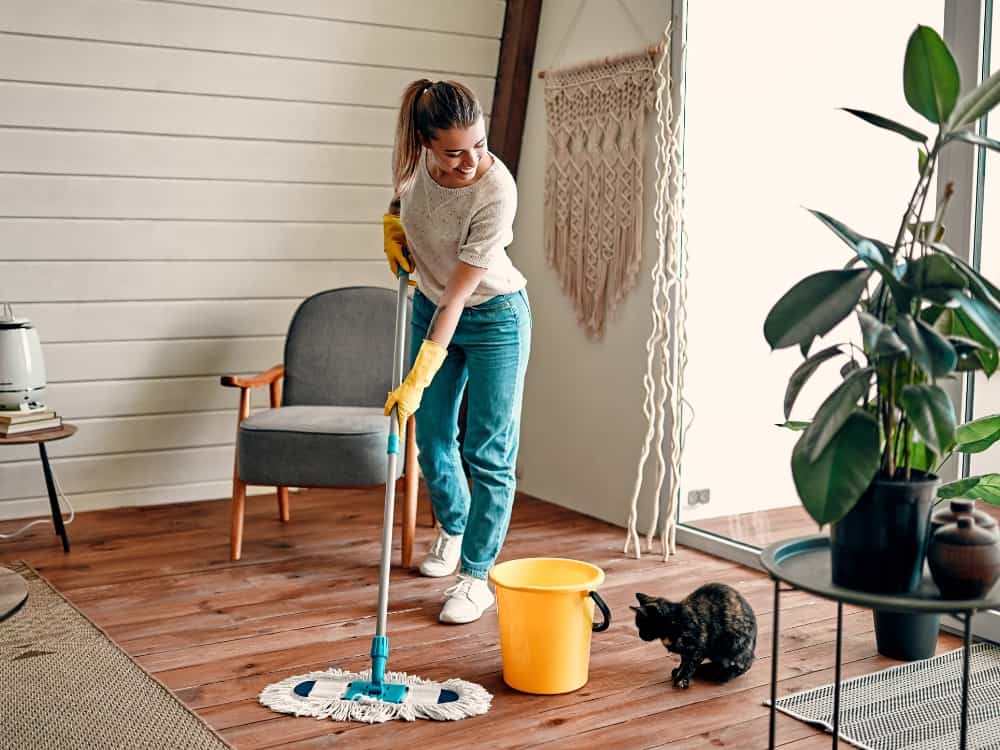
What is an example of green cleaning?
The answer for how to green clean doesn’t necessarily lie in specific products.
Before setting out to buy green cleaning chemicals, try these tips to clean up your home first:
- Set up your house with cleanliness as a focus. We’re not saying go full-blown minimalist or zero-waste, but more clutter and stuff means more dust and dirt.
- Improve indoor air quality. Do this by opening windows and doors to allow fresh air inside. Oftentimes indoor air quality is actually more toxic than outdoor city air.
- Clean with greener cleaning products. Or if brand labels aren’t your thing, stick to the bare basics: warm water, vinegar, and baking soda.
- Safely dispose of harmful cleaners. Throwing them in the trash or down the drain is harmful and dangerous. Instead, contact your municipal waste management about when they provide pick-up.
- Baking soda is your bestie. Carpet cleaner, fridge refresher, odor eliminator, grit and grime remover, and more, it’s a must-have in your cleaning arsenal.
- Filter your air naturally. Indoor plants help. If you have indoor air filters, make sure to replace them regularly. Air fresheners should be avoided at all costs—boil herbs, keep fresh cut flowers, or use essential oils instead.
- Skip the dry cleaners. In many cases, they use Perchloroethylene, or perc, which is unhealthy for humans and makes smog. Find a local cleaner who uses greener methods, like carbon dioxide cleaning.
- Forget “antibacterial”. They breed “superbugs” and the FDA suggests they work no better than good ole’ soap and water, and should be avoided.
- No time to clean? Use a local green cleaning service.
- Take off your shoes. In most Asian cultures, shoes are off before you’re in the door—for good reason! Our shoes carry all kinds of yuck and muck like animal waste, herbicides, pesticides, salt, pollution, dirt, lead, and more. Less floor dirt also means less cleaning work, resources, and energy.
7. Greener Cleaning Brands
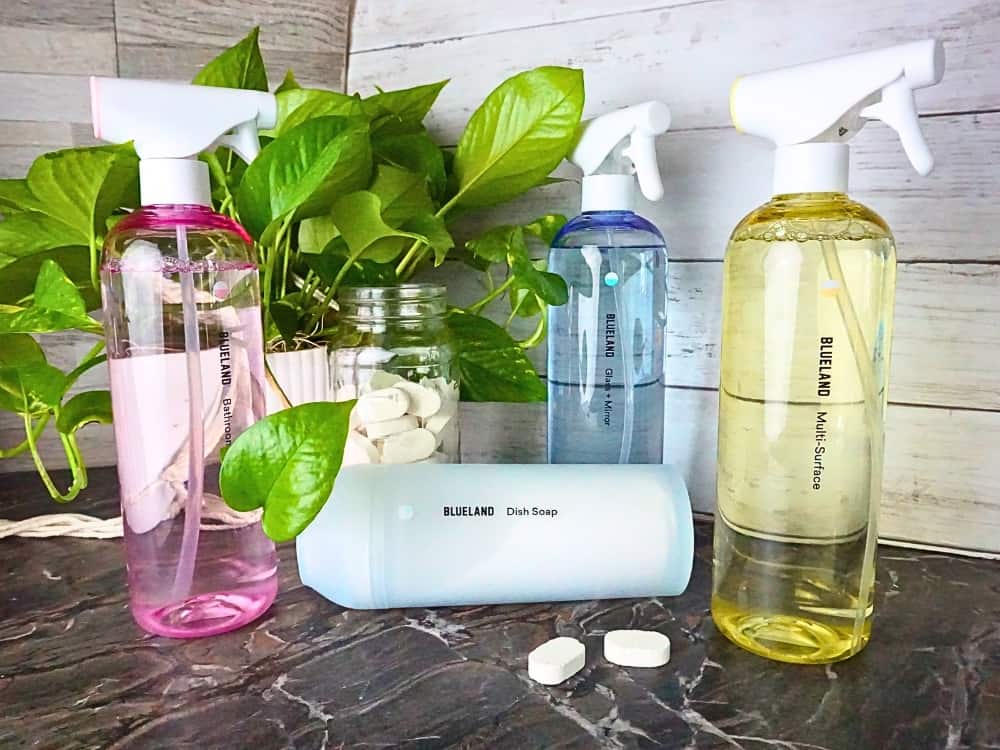
After you’ve tackled those cost-free green house cleaning tips, you can start to look at the products you use.
For a clean conscience to match your clean home, make the healthy swap to any one of these brands for how to green clean without the greenwash.
- Biokleen: We especially love the eco-friendly carpet cleaner from this 30+ year old people and planet friendly cleaning brand.
- Blueland: A Certified B Corp with everything from eco-friendly dishwasher tablets to zero waste dish soap that also has certifications from Cradle to Cradle, Environmental Protection Agency (EPA), Safer Choice, MADE SAFE, USDA BioPreferred, and EWG.
- Common Good: A natural cleaning brand designed with refills in mind.
- Dr Bronner’s: Their legendary Castile soap is super versatile. With advertised “18-in-1” uses (and probably more if you’re creative), it can become everything from natural laundry detergent to a green carpet cleaning solution.
- Dropps: We first fell in love with this Certified B Corp’s plastic-free zero waste laundry detergent and their eco-friendly dishwasher detergent likewise packs a stain fighting punch without harming our bodies or planet.
- etee: This Canadian brand commits to reducing their environmental impact with a range of plastic-free alternatives, including reusable food wraps, non-toxic dishwasher detergent, and much more.
- Ethique: Another B Corp, Ethique nails zero waste cleaning with their popular concentrate bars with compostable wrappers.
- Grove Collaborative: With green home cleaning essentials like eco-friendly sponges and recycled trash bags, this B Corp is a veritable grove.
- SuperBee: Reusables like this woman-owned B Corp’s paper towel alternatives, fabric softener alternatives, or dryer sheet alternatives reduce waste associated with home cleaning.
8. DIY Green Cleaning
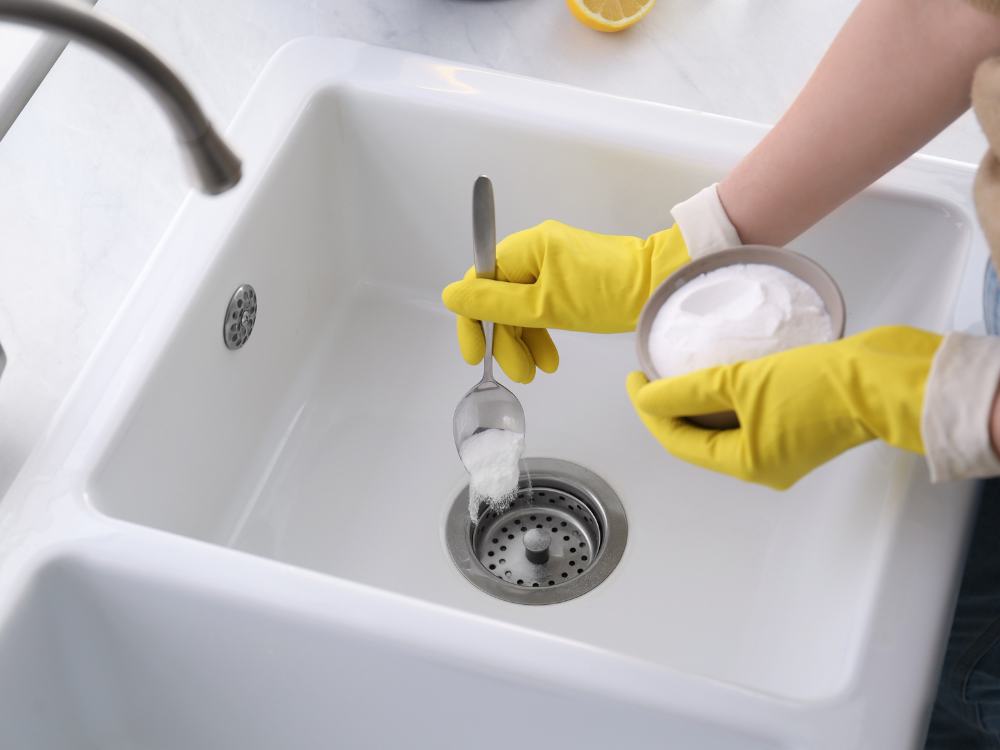
For the best green cleaning products, you don’t need atomic energy to unclog the drain or a SWAT team to manage some stray ants.
Making homemade products is effective, hygienic, and affordable. Most of these ingredients are probably already lying around your home or they’re sold at your local bulk store or supermarket.
So, how to green clean with your own cleaners (via this trusted medical source):
Air Freshener:
Use either dried or fresh flowers to refresh the air. Or boil water with vanilla, cinnamon, slices of lemon or orange, or your preferred spices. To deodorize your fridge, leave baking soda in an open bowl. For carpets, sprinkle it generously, let it sit for 15 minutes, and then vacuum it up.
All-Purpose Cleaner:
Combine equal parts water and vinegar in a reusable spray bottle. Works on many hard surfaces. Avoid natural stone surfaces, stainless steel, cast iron, or unfinished wood, which don’t like the acidity.
Drain Cleaner:
Pour 1/2 cup of baking soda into a clogged drain, then 1 cup of vinegar. Let it work for 15 minutes and then pour boiling water down the drain.
Disinfectant:
Mix 1 tbsp of liquid Castile soap, 1 tsp of tea tree oil, and 2 cups of water to create a multipurpose disinfectant that kills germs.
Glass Cleaner:
Shake 1/4 cup of rubbing alcohol, 1/4 cup of white vinegar, 2 cups warm water, and 1 tbsp of cornstarch in a spray bottle. Cleans glass surfaces and stove tops.
Laundry Soap:
Combine 1/2 cup of washing soda, 1/2 cup of baking soda, and 1 cup of soap flakes (or grate the soap yourself!). Add 1 to 2 tbsp of oxygen bleach for extra sparkle, which is natural and biodegradable.
Multipurpose Scrub:
Combine enough baking soda and water to make a paste. Use the paste with a sponge, scrubber, or brush to clean sinks, stoves, and other hard surfaces. Wipe with warm water after.
For extra stuck-on grime, spray white vinegar on the baking soda and let the foaming action work its magic.
Stain Remover:
If you need a green upholstery cleaner, carpet cleaner, or stain remover, mix two parts hydrogen peroxide with one part dish soap. Add in one tablespoon of baking soda and mix to form a paste.
Toilet Cleaner:
Equal parts hydrogen peroxide and water will create a powerful disinfectant.
Did you know we Have a Newsletter?
We cover the latest in sustainable living, fashion, zero waste, beauty, travel, finance and more…
Final Thoughts On Cleaning Green
Warning! Caution! Danger!
Why do home essentials look more like a cigarette pack with all their warning labels?
It’s to limit the brand’s liability, while they continue to bombard our bodies and ecosystems with nasties that harm us.
And cleaning a dirty sink (or fridge) does not have to mean a dirty planet or disease.
Whether it’s time to bring harmony to your home eco-system or you’re ready for some sustainable spring cleaning, if you’re looking to clean up your life and go green, cleaning products are the perfect place to start.
Everyone can affordably and safely spruce up their homes, so please, help turn the slob next door into a proper green clean freak by sending them this article.
Pin these:
